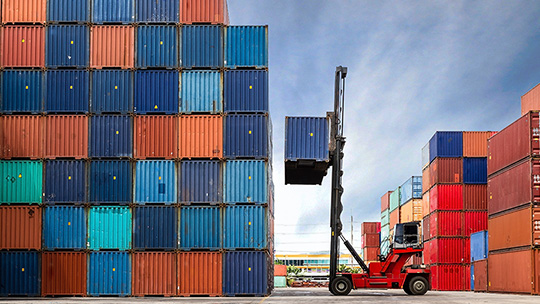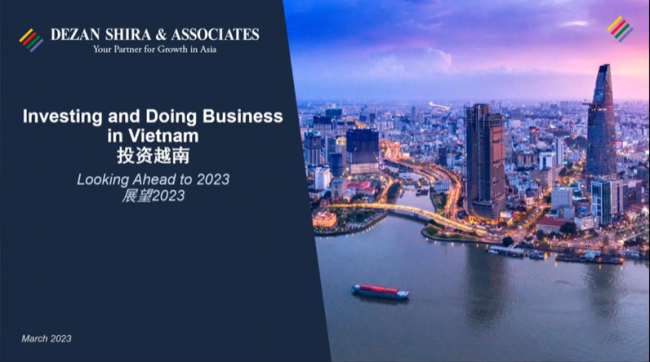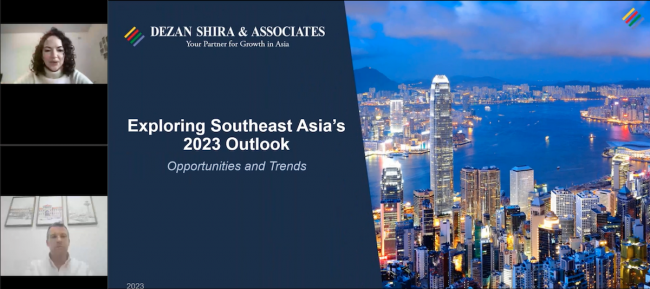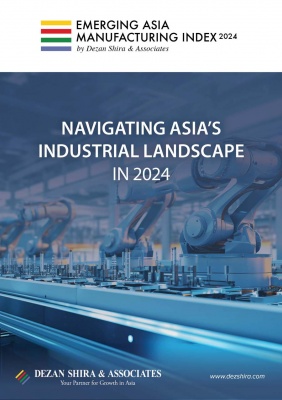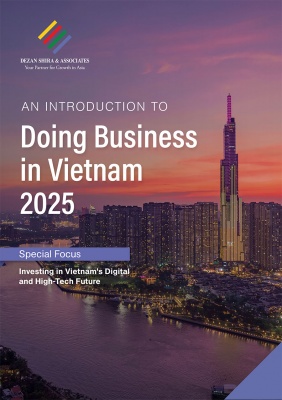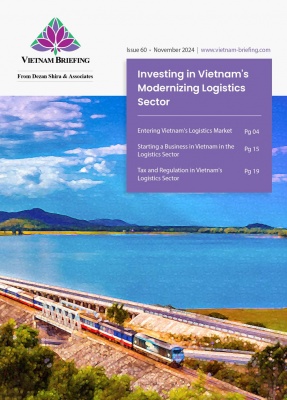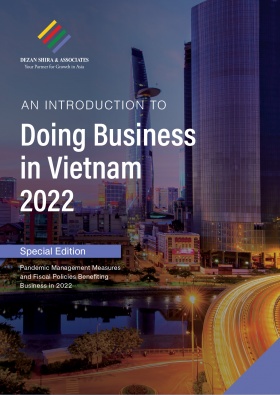Vietnam’s Blue Economy Potential and Opportunities for Investors
Vietnam’s blue economy is a relatively new concept that encompasses economic activities related to oceans and seas while improving livelihoods and preserving the health of the ocean ecosystem. The sea and coastal areas of Vietnam account for approximately 47-48 percent of the country’s GDP. Vietnam Briefing highlights some distinct characteristics of the blue economy as well as opportunities for investors.
The development of Vietnam’s blue economy is a relatively new concept but is necessary to address the environmental issues, its carbon footprint, and the exploitation of natural resources along its coastlines.
What is the blue economy?
The blue economy is a relatively new term. It means the assurance of economic growth and the development of marine ecosystems while ensuring the reasonable exploitation of natural resources with lesser environmental impact. It also means the construction and development of infrastructure adaptable to climate change and extreme weather.
The World Bank describes the blue economy as the sustainable use of ocean resources for economic growth while improving livelihoods and preserving the health of the ocean ecosystem.
As such, the blue economy is the central point to enable Vietnam achieve its Sustainable Development Goals (SDGs) by 2030 with vision to 2045, with the environment being one of the pillars of this development.
The blue economy would also help meet Vietnam’s climate change goals. Recent studies show that a 1-meter rise in sea level would impact 11 percent of Vietnam’s population and 7 percent of its agricultural land. Depending on the severity of sea-level rise, climate change may eventually expose 38‐46 percent of Vietnam’s population to flooding.
The development of the blue economy, however, must be based on a balanced growth of six industries: fisheries and aquaculture; oil and gas; marine renewable energy; coastal and marine tourism; the maritime sector; and environment and ecosystems.
Opportunities for the development of Vietnam’s blue economy
Vietnam’s long coastline is advantageous as it is situated near international and regional maritime routes. Vietnam’s coastal areas lie in areas with high economic growth rates and serve as a bridge between several regional trading partners and shipping routes.
These are favorable conditions for Vietnam to develop its maritime sector, shipbuilding, and logistics industries, given its 114 estuaries, and 52 deep-sea gulfs along the central coast (gulfs, bays, and lagoons stretching over 60 percent of the coastline), and over 100 positions for construction of big seaports.
Vietnam is home to several natural resources and contains about 35 minerals of various groups: fuel, metal, building materials, precious and semi-precious stones, and liquid minerals. Sand mines under sea beds in Quang Ninh province and Hai Phong city have a deposit of over 100 billion tonnes and nearly 9 billion tonnes respectively.
Besides, the potential of seawater resources is significant with diverse types of marine energy such as natural hydrate, tidal energy, wave energy, and heavy-water nuclear energy.
Vietnam is also rich in marine resources. Apart from fish, a major resource, there are many high economic resource value items such as shrimps, crabs, sea cucumbers, and seaweed. The fish deposit in Vietnam’s sea areas is approximately 5 million tons/year, with the annual fish catch at around 2.3 million tons.
As per the Ministry of Agriculture and Rural Development (MARD), annual marine aquaculture output is expected to reach 850,000 tonnes and export turnover is estimated to be between US$800 million and US$1 billion. Moreover, the 3,260 km-long coastline and thousands of islands constitute favorable conditions for Vietnam to develop sea tourism. Along its coast, there exist about 12 beaches, some ranked as the best in the world.
Vietnam’s coastal areas lie in a tropical climatic zone with many parts enjoying long sunshine hours throughout the year, which is ideal for tourists, especially those coming from countries with cold winters.
Regulations that foster the development of the blue economy
Vietnam has launched many strategies and policies to help in transitioning its economy from a “brown” to a “green” one, including the National Strategy on Green Growth 2021-2030 with a vision to 2050; the strategy on sustainable exploitation and use of marine resources, and the protection of marine environment up to 2020, with a vision toward 2030, among others; and made many international commitments on environment and development, such as the net-zero carbon commitment at COP26.
Vietnam has approved several laws, and master plans for the deployment of green growth tasks, such as the National Action Plan on Green Growth, the 2012 Law of the Sea of Vietnam, and the 2015 Law on Marine and Island Resources and Environment.
Additionally, the government also issued Resolution 36-NQ/TW on October 22, 2018, on the Strategy for sustainable development of Vietnam’s marine economy to 2030, with a vision toward 2045.
The strategy states that by 2030, the marine economic sectors will be developed in the following priority order: sea tourism and services; maritime economy; exploitation of petroleum and other marine minerals; marine resource farming and exploitation; coastal industries; renewable energy and new marine economic sectors.
It can be observed that resource-intensive economic sectors have been given lower priority and replaced by natural resource-saving ones such as tourism and the maritime industry.
The highlight of the strategy is the inclusion of marine resource farming besides exploitation. In addition, it lists the renewable energy industry and new marine economic sectors, such as wind power, on-sea solar power, sea-tide power, and exploitation of marine biodiversity resources (marine pharmaceuticals, seaweed growth, and processing).
This is the first time that Vietnam has developed robust plans related to the blue economy to sustainably develop the marine economy in line with international standards, which shows the country’s objective toward a more sustainable marine industry.
Opportunities for investors
The maritime industry
Investors currently have many opportunities to participate in maritime projects after Vietnam’s master plan for seaport system development was approved.
The master plan for 2021 – 2030 is among the five national plans developed by the Ministry of Transport and approved by the Prime Minister. The highlight of the master plan is the list of seven infrastructure development projects using non-budget capital sources.
The total capital needed for these projects in the 2021-2025 period is about VND 150,357 million (US$6.5 million) and VND 146,643 million (US$6.3 million) in the 2026-2030 period. Among them are projects that are attracting special attention from domestic and foreign investors such as Lach Huyen port, Tran De – Soc Trang port, Nghi Son – Thanh Hoa port, Cai Mep Ha port, and the shallow port system.
The shipping industry itself is also a potential industry in the marine economy for investment with attractive tax incentives and policies, which Vietnam Briefing has discussed in the previous article.
Offshore wind power industry
Another marine industry that can offer significant potential for foreign investors is wind power. It is forecast that total wind capacity will increase from around 3GW in 2021 to just under 13GW by 2030, with the government also looking to develop 21GW of offshore wind by 2045.
Additionally, Vietnam is an energy transition leader in ASEAN as the country plans to develop its wind power capacity outpacing its neighbors such as Thailand and the Philippines.
Vietnam has a geographical advantage, particularly it’s over 3,000-kilometer coastline with high wind speeds, favorable for offshore wind development.
Regarding the policies, unlike in other countries, like the Philippines, there are no restrictions on foreign direct investment. Investors can therefore have 100 percent foreign ownership.
Vietnam has also had a generous tariff of US$0.085/kWh for wind projects, which helped spur a flurry of development ahead of that tariff’s expiration on 1 November 2021.
Tourism
As another resource-saving marine industry, tourism also boasts attractive investment opportunities for investors. This proves feasible now as Vietnam has reopened after the pandemic, with international flights resuming, and rapid COVID-19 test requirements on international entry no longer required.
According to data from the General Statistics Office (GSO), in the first two months of 2022, international visitors to Vietnam were estimated at 49,200 arrivals, up 71.7 percent over the same period last year.
Many resort real estate projects have announced investment policies or officially opened for sale on the market from the beginning of 2022.
Particularly, the central provinces such as Binh Thuan, Khanh Hoa, and Thua Thien-Hue, known as the center of coastal tourism, have also introduced many large-scale real estate projects, catering to the tourism industry.
Takeaways
As Vietnam aims to reach net zero-carbon status by 2050, sustainable development will be the main theme that covers all economic sectors in Vietnam, including the marine economy. Therefore, with the country’s supportive government policy-making and advantageous natural resources, the blue economy now emerges as another potential investment opportunity for investors.
About Us
Vietnam Briefing is produced by Dezan Shira & Associates. The firm assists foreign investors throughout Asia from offices across the world, including in Hanoi, Ho Chi Minh City, and Da Nang. Readers may write to vietnam@dezshira.com for more support on doing business in Vietnam.
We also maintain offices or have alliance partners assisting foreign investors in Indonesia, India, Singapore, The Philippines, Malaysia, Thailand, Italy, Germany, and the United States, in addition to practices in Bangladesh and Russia.
- Previous Article US-Vietnam Pledge Increased Trade, Cooperation Despite Lackluster US-ASEAN Summit
- Next Article Vietnam’s Hiring Challenges and Potential Incentives for Retaining Employees
